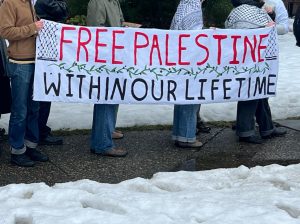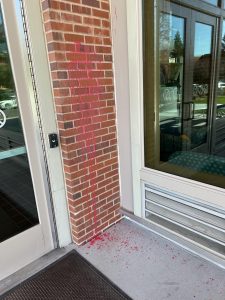The hegemonic narrative of sexual violence
March 10, 2022
CW: Sexual, physical, racial, ableist and gender-based violence.
Approximately one in five women in the United States experience sexual assault at some point in their lives. Although, this number is likely much higher, as many victims do not make reports due to painful process of reporting this violent experience and the disturbing realization that, historically, sexual assault victims are met with severe disrespect, and we are frequently unheard. Sexual violence is a very real and traumatic experience for every person regardless of race, gender, physical and mental ability or sexuality. However, the disparities in assault rates, discussions around sexual assault and failure for this “one in five” statistic to acknowledge those most at risk are just as real.
Due to the intersections of both racism and sexism, Black women, Indigenous women and women of color are at a much greater risk for sexual violence compared to white women. There are many existing statistics showing these disparities, but they are also likely much higher due to the heightened difficulties in reporting sexual assault for women of the global majority.
Hypersexualized depictions of women of color, featuring Black women in particular, increase the likelihood of the dismissal of their violent sexual experiences. Reporting to law enforcement is much more dangerous compared to white women due to rates of racially enforced police brutality. There is also a greater risk for women who migrated to the U.S. and do not have documentation, as they face the threat of deportation or abuse from law enforcement and, oftentimes, a language barrier.
For years, women of the global majority have been explaining the violence feminism and sexual violence advocacy perpetuates when exclusively centering white women.
“The failure of feminism to interrogate race means that the resistance strategies of feminism will often replicate and reinforce the subordination of people of color,” stated Kimberlé Crenshaw in her book, “Mapping the Margins.”
Approximately 47 percent of transgender people have been sexually assaulted, and yet again this number is likely much higher considering approximately 58 percent of transgender people experience assault, harassment and disrespect when interacting with law enforcement, making it very difficult to report sexual violence. These rates are even higher for Black trans and trans people of color, trans people who have or previously had a disability(s) and trans women. Actress Laverne Cox described her observations of the public response when trans women report their experiences with sexual assault stating, “there has been a different tenor in terms of the ways they’ve been believed as opposed to other women who are not trans.”
People with disabilities experience sexual violence at approximately three times the rate of people without disabilities. Statistics show that 83 percent of women with disabilities will be sexually assaulted during their lives, and yet again this number is likely higher due to the threat of assault and disrespect that people with disabilities often experience from law enforcement. The rates of sexual assault are also higher for those within the community who obtain identities intersecting on race, gender and sexuality. Imani Barbarin created the twitter hashtag, #4OutOf5.
“Disabled women experience sexual assault or violence in their lifetimes. It’s time that our voices are heard in chorus with the #MeToo movement,” wrote Barbarin.
It is important for any victim of sexual assault to share their stories and speak out against this violence, but it is also crucial to recognize our positionality. We are not actually speaking about sexual assault if we solely acknowledge and amplify the stories of white, cisgender, non-disabled heterosexual victims. We cannot claim to support women if we only support white, cisgender, non-disabled heterosexual women.
All victims of sexual assault and all women have voices, but we are selective in the voices we choose to hear. It is always painful and difficult to share these experiences and speak out, but there is a pattern of which voices are amplified the most. We cannot liberate women if we continue to center the most privileged women, and we cannot successfully stop sexual violence if we continue to amplify the experience of one kind of victim.







